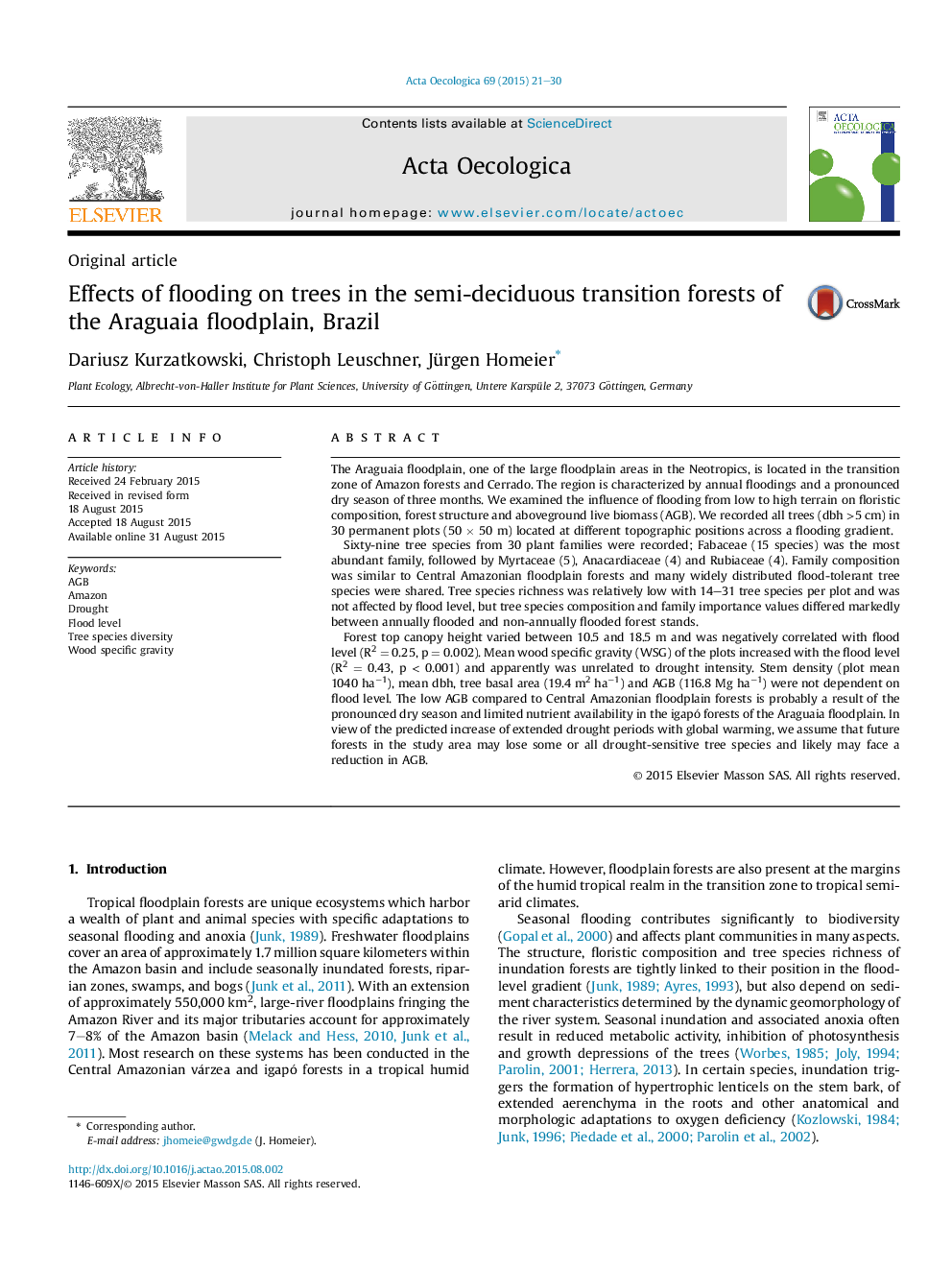| Article ID | Journal | Published Year | Pages | File Type |
|---|---|---|---|---|
| 4380638 | Acta Oecologica | 2015 | 10 Pages |
•We studied tree composition and biomass (AGB) of the Araguaia floodplain, Brazil.•The region is characterized by annual floodings and a pronounced dry season.•Forest canopy height decreased and mean wood density increased with flood level.•Species richness, basal area and AGB of trees were not dependent on flood level.•The low AGB of the studied forest is most likely a result of the strong dry season and limited nutrient availability.
The Araguaia floodplain, one of the large floodplain areas in the Neotropics, is located in the transition zone of Amazon forests and Cerrado. The region is characterized by annual floodings and a pronounced dry season of three months. We examined the influence of flooding from low to high terrain on floristic composition, forest structure and aboveground live biomass (AGB). We recorded all trees (dbh >5 cm) in 30 permanent plots (50 × 50 m) located at different topographic positions across a flooding gradient.Sixty-nine tree species from 30 plant families were recorded; Fabaceae (15 species) was the most abundant family, followed by Myrtaceae (5), Anacardiaceae (4) and Rubiaceae (4). Family composition was similar to Central Amazonian floodplain forests and many widely distributed flood-tolerant tree species were shared. Tree species richness was relatively low with 14–31 tree species per plot and was not affected by flood level, but tree species composition and family importance values differed markedly between annually flooded and non-annually flooded forest stands.Forest top canopy height varied between 10.5 and 18.5 m and was negatively correlated with flood level (R2 = 0.25, p = 0.002). Mean wood specific gravity (WSG) of the plots increased with the flood level (R2 = 0.43, p < 0.001) and apparently was unrelated to drought intensity. Stem density (plot mean 1040 ha−1), mean dbh, tree basal area (19.4 m2 ha−1) and AGB (116.8 Mg ha−1) were not dependent on flood level. The low AGB compared to Central Amazonian floodplain forests is probably a result of the pronounced dry season and limited nutrient availability in the igapó forests of the Araguaia floodplain. In view of the predicted increase of extended drought periods with global warming, we assume that future forests in the study area may lose some or all drought-sensitive tree species and likely may face a reduction in AGB.
